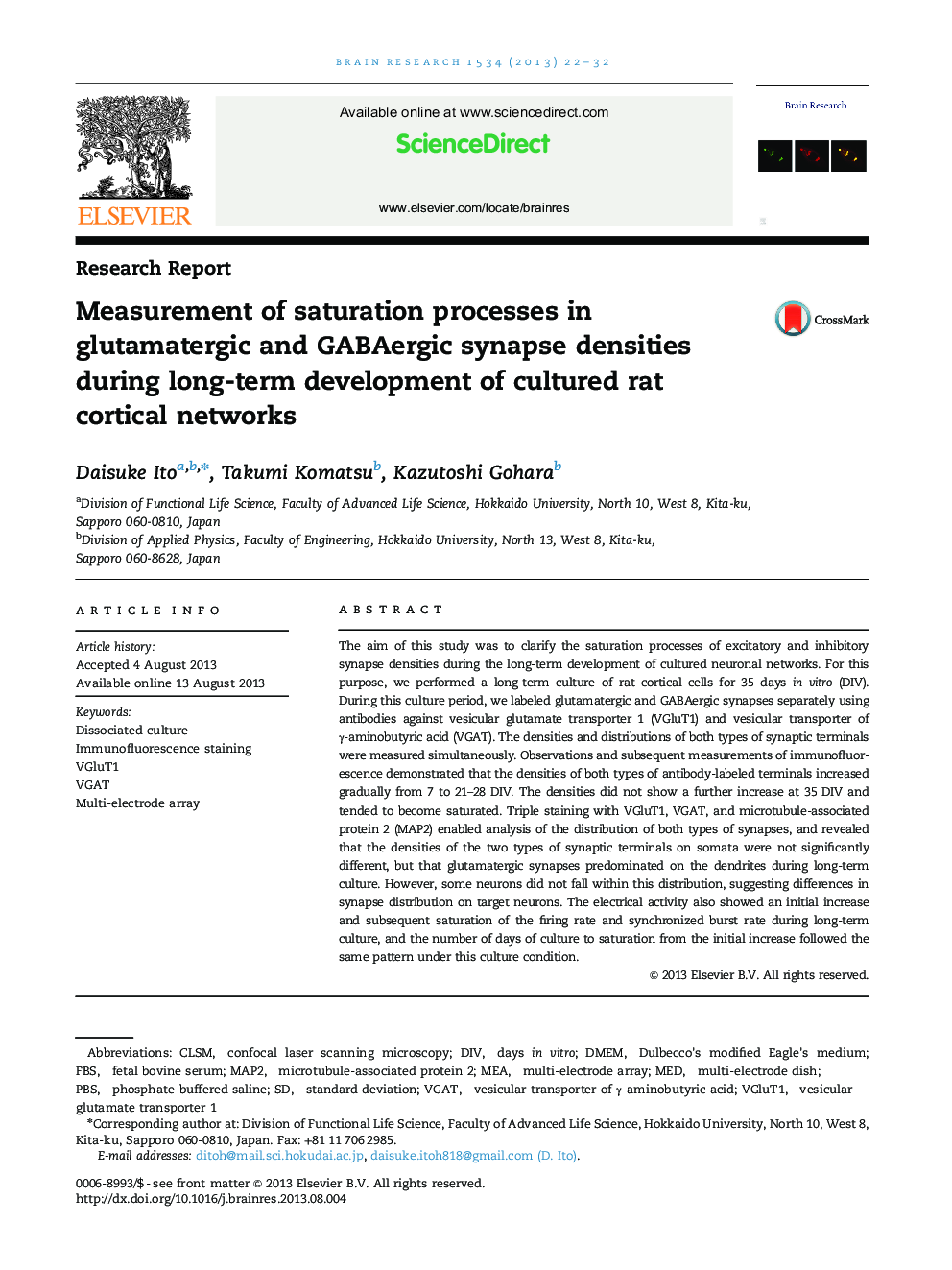| Article ID | Journal | Published Year | Pages | File Type |
|---|---|---|---|---|
| 6263610 | Brain Research | 2013 | 11 Pages |
â¢Glutamatergic and GABAergic synapses were labeled simultaneously in long-term culture.â¢The densities of both types of terminals showed saturation over the first month.â¢Triple staining and analysis revealed that the distribution of synapses differed.
The aim of this study was to clarify the saturation processes of excitatory and inhibitory synapse densities during the long-term development of cultured neuronal networks. For this purpose, we performed a long-term culture of rat cortical cells for 35 days in vitro (DIV). During this culture period, we labeled glutamatergic and GABAergic synapses separately using antibodies against vesicular glutamate transporter 1 (VGluT1) and vesicular transporter of γ-aminobutyric acid (VGAT). The densities and distributions of both types of synaptic terminals were measured simultaneously. Observations and subsequent measurements of immunofluorescence demonstrated that the densities of both types of antibody-labeled terminals increased gradually from 7 to 21-28 DIV. The densities did not show a further increase at 35 DIV and tended to become saturated. Triple staining with VGluT1, VGAT, and microtubule-associated protein 2 (MAP2) enabled analysis of the distribution of both types of synapses, and revealed that the densities of the two types of synaptic terminals on somata were not significantly different, but that glutamatergic synapses predominated on the dendrites during long-term culture. However, some neurons did not fall within this distribution, suggesting differences in synapse distribution on target neurons. The electrical activity also showed an initial increase and subsequent saturation of the firing rate and synchronized burst rate during long-term culture, and the number of days of culture to saturation from the initial increase followed the same pattern under this culture condition.
